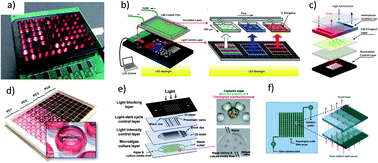Emerging microalgae technology: a review
Abstract
Cultivating microalgae has the potential to produce biofuels and bioproducts from solar energy with low land use and without competing with food crops. However, despite these key advantages, barriers remain to widespread, economical production from microalgae including: the relatively low solar energy conversion efficiency of photosynthesis, unknown optimal cultivation conditions, and the high energy and economic costs of cultivation and processing microalgal biomass. Thus, recent technological developments seek to address these barriers. To optimize cultivation conditions, devices taking advantage of advanced fluid and light handling techniques are being developed. These approaches drastically increase experimental throughput to find the ideal cultivation parameters. To apply optimal conditions, a range of cultivation approaches are being developed to deliver light and nutrients to microalgae to achieve high productivities. Finally, to extract maximal value out of microalgal biomass, downstream processing technology, such as hydrothermal liquefaction, is replacing costly conventional processes to produce fuels and high-value products from microalgae. Taken together, these technologies can allow microalgae to become competitive in the sustainable energy landscape – particularly to produce complex, high-value molecules.



 Please wait while we load your content...
Please wait while we load your content...